If you’re dipping a toe into the world of microphones, it’s easy to be overwhelmed by the sheer variety of different mics on the market. Dynamic, unidirectional, cardioid, supercardioid… where to begin?
Fortunately, microphone builders tend to manufacture their microphones with a particular use case in mind. Omnidirectional mics, as the name implies, pick up and amplify sound from 360 degrees.
Accordingly, they’re more popular than unidirectional microphones (which only detect sound from one direction) among those who talk, rather than sing, into a microphone.
You’ve probably seen omnidirectional microphones before. They’re very widely used in TV, podcasting, and streaming.
In this article, I’ve compiled some of the best, and most widely used (and I've been a user of most of these mics), omnidirectional microphones on the market.
Best Omnidirectional Mics - All Types & Budgets!
1. Rode Reporter
Rode is one of the biggest names in microphone manufacturing. Their aptly named Reporter looks like the kind of microphone you’d see a TV journalist offering to their in-the-field interview subject. That’s precisely because, for decades, TV reporters used Rode mics just like this one for exactly that purpose.
The Reporter feels reassuringly weighty in my hand, with an all-metal chassis. It’s not overly heavy, either, resting comfortably in the speaking position.
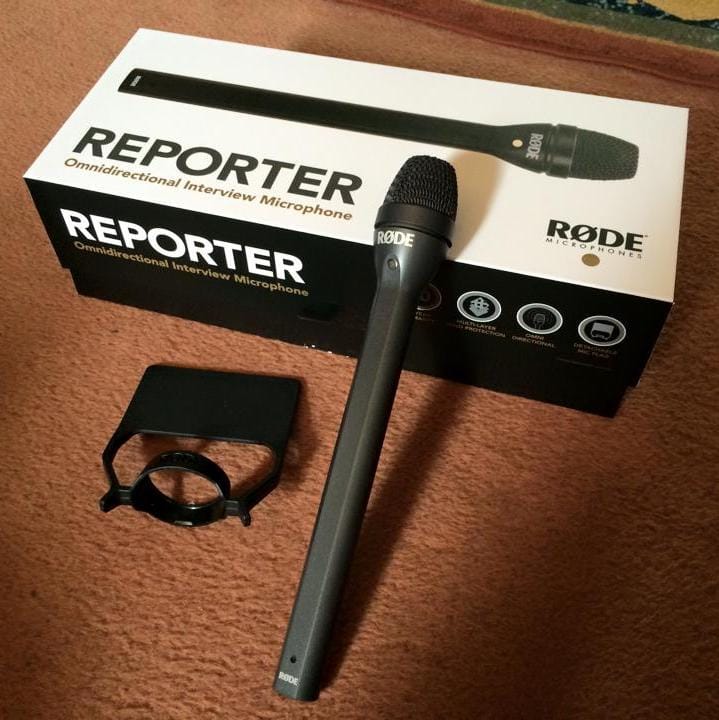
RODE Reporter
The Reporter features a built-in shockmount that prevents handling noise and there is no need for an external shockmount. You can move the mic through the air without picking up any unwanted hiss or crackle.
Likewise, the microphone didn’t pick up any background noise. I live on a reasonably busy road, and headed outside to test the mic’s rejection of traffic noise. It doesn’t totally cancel out heavy trucks, but you could fairly easily deliver the news from next to a busy road.
You won’t really need a pop filter or windscreen with this mic, but I would recommend one for the best audio quality.
Sound is very clear up close and is even still audible from around two to three feet away. I wouldn’t use it any further than two feet, though, since there is a considerable dip in volume beyond that.
I think if you are looking for a mic for using outside to do interviews or reporting, then the Reporter is great. You can certainly use it for podcasting, but there are better mics for that. Podcasters and streamers tend to do their work from a soundproofed studio, so you don’t necessarily need as robust or noise-rejecting a microphone for those use cases.
2. Aston Spirit
Aston microphones have been doing exceptionally well lately, producing amazing microphones at a very good price. The Aston Spirit is probably one of my favorite mics to use in Omni mode for vocal broadcasting.
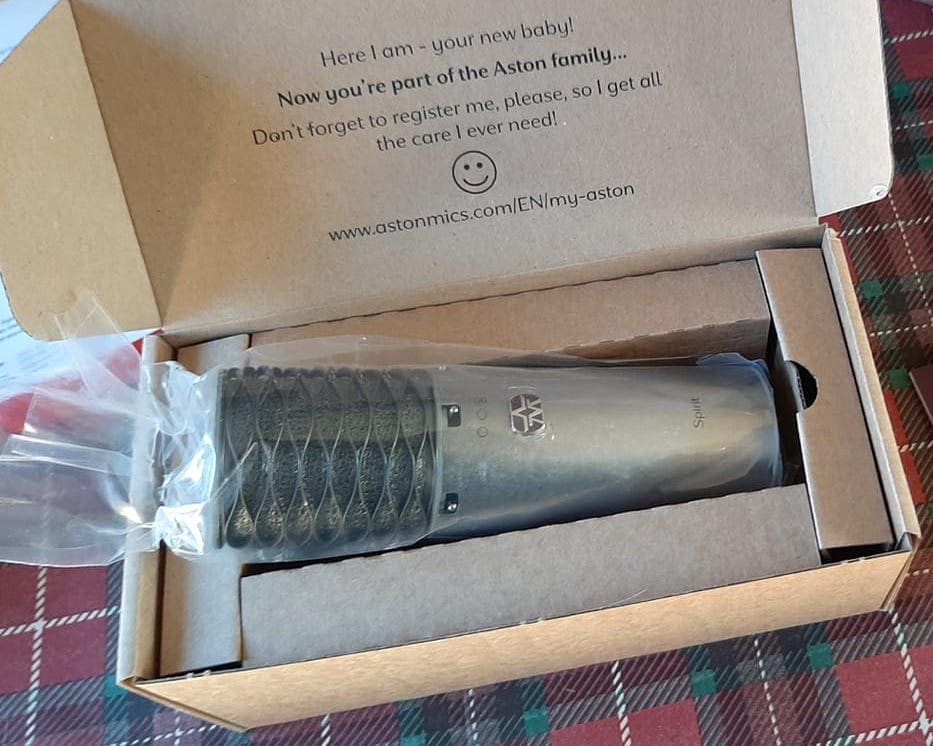
Aston Spirit
It's really well-built and has a built-in mesh pop filter, which is awesome for those up-close moments when certain consonants might produce an annoying popping sound.
Aston didn't compromise on the quality of their capsule. It's a 1-inch evaporated gold capsule that's perfectly matched to a custom-made transformer.
This not only makes the mic clean and accurate, but the circuitry also helps reduce distortion. That's super important for capturing that warm and present vocal sound, especially up close.
I love using this on both male and female vocals, but I think it really shines with male vocals because it has a nice harmonic warmth, almost like a high-end tube mic but with less distortion.
The mesh filter is amazing because it allows the vocalist or broadcaster to get really close and intimate. It can also handle high sound pressure levels and has a 10dB and 20dB pad in case you want to be extra sensitive or push your preamp a bit harder.
It has a fantastic filter that cleans up the signal at the source. They also added an 80Hz high-pass filter. I've always found that cutting around 80-100Hz is the sweet spot to get a nice mic sound for male vocals without the extra rumble of background noise.
The only potential downside of this mic is that it's a bit wide and bulky in design, so make sure you have a sturdy stand if you're using it for broadcasting or studio recording.
3. Blue Yeti
The Blue Yeti is pretty much the baseline when it comes to entry-level professional audio. This is the mic that almost everyone buys when they start streaming, podcasting, or Youtubing professionally. Early adopters who tend to follow brand-new streamers and podcasters will recognize this microphone’s distinctive egg-like silhouette.
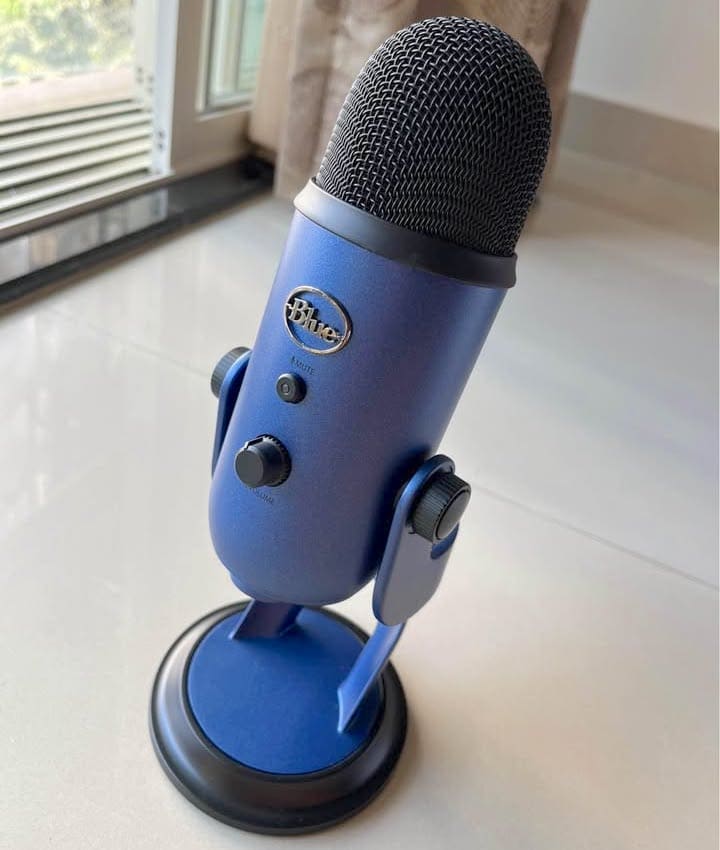
Blue Yeti
The Yeti is the go-to mic for beginners for three simple reasons. It’s affordable, it sounds good, and using it is as simple as plugging it in.
The Yeti is robust, with a solid, bulky body. It’s clearly meant to stand on your desk, rather than for handheld use.
There’s noticeable pickup of unwanted audio if you’re using the desk stand. I put my cup of coffee down on the desk (unwise, I know) while using the mic, and it picked up the sound.
Either you’ll need to be very careful using this for recording a podcast, or you’ll want to invest in a better shock mount.
Luckily, this is my only real issue with the Yeti. Everything else about it is pretty great.
All of the important controls are located right on the mic. You can set the volume, gain, mute the mic, and even select the polar pattern.
The Yeti features four polar patterns: cardioid, bidirectional, omnidirectional, and stereo. This makes it well-suited for almost any recording scenario. I wouldn’t record a full live band with it, but for just about any spoken word scenario it sounds great.
The sound quality of the Yeti is quite good as well. It picks up voices quite well, sounding fairly full and rich. Both male and female voices sounded crisp and clear through the Yeti.
Fortunately, there wasn’t any noticeable “pop” while talking, so you won’t need to buy or assemble a pop filter. The Yeti won’t pick up much from any further than a foot away, but you won’t notice any issues if you mount it comfortably within that distance on your desk.
I’d thoroughly recommend the Yeti to beginner podcasters and streamers who need something that sounds great and requires minimal fiddling about.
4. Shure MVL
Another mic from Shure, this time a lavalier mic. The MVL is a fantastic and easy to use lav mic.
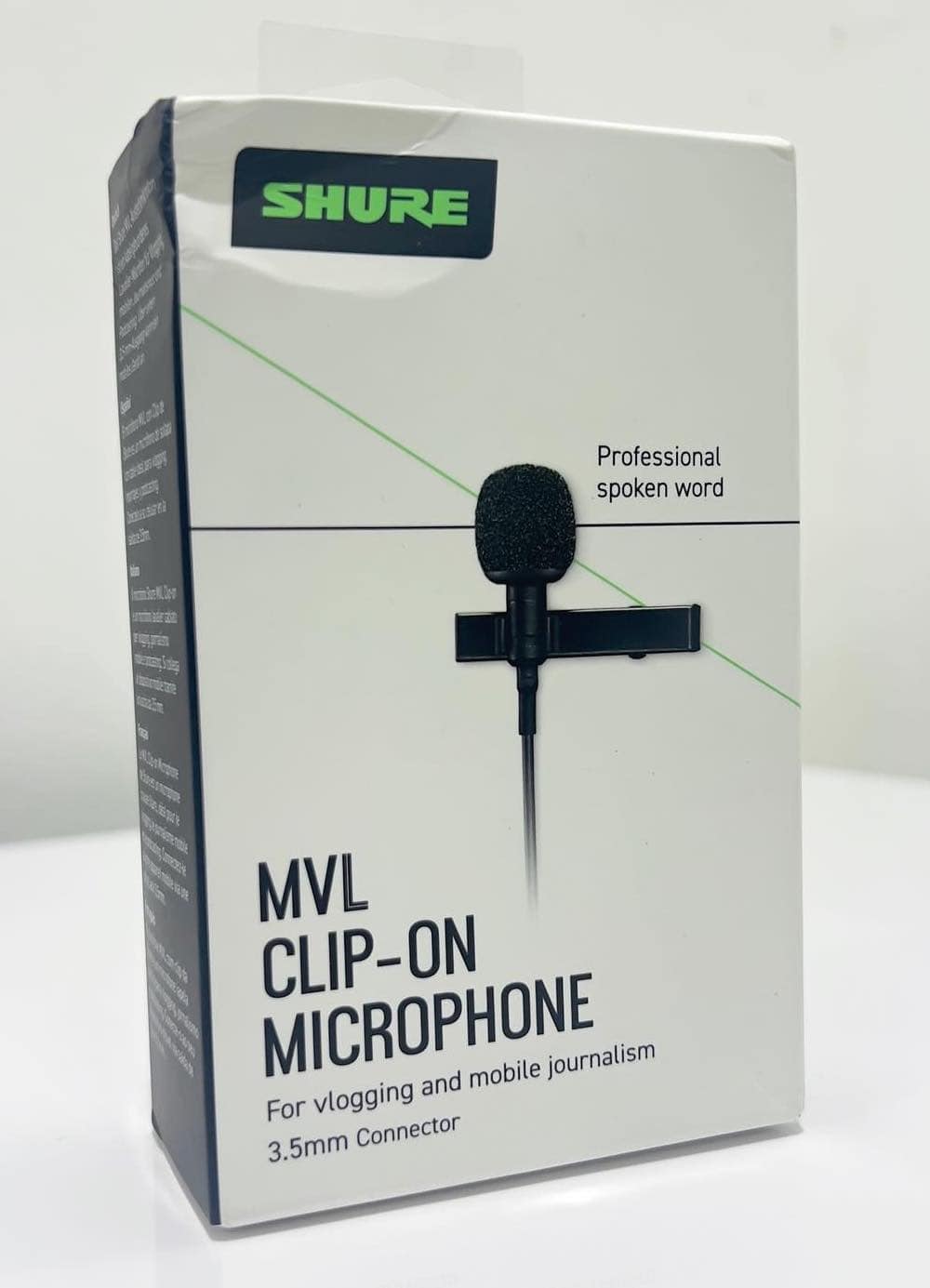
Shure MVL
The MVL is similar to the Sony ECM-CS3 (which I've discussed below) since it is designed to be an easy plug-and-play lav mic.
Shure’s reputation is built on blending affordability with build quality. Their flagship SM-58 vocal mic, for example, is the industry standard. I know people who bought Shure mics in the '80s that are still working today!
Of course, all microphones should be handled with utmost care. However, the MVL feels reliably sturdy, with the cable reinforced at both ends.
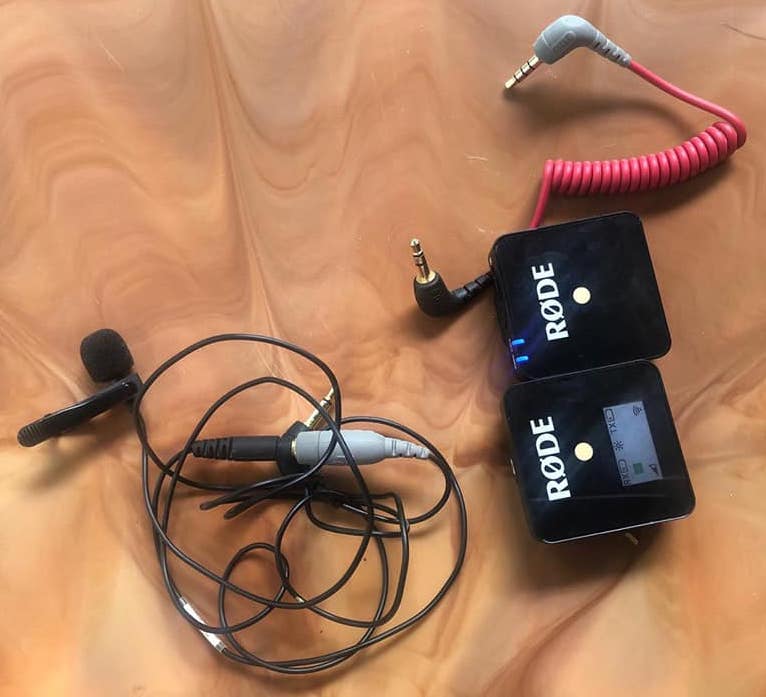
Shure MVL next to my RODE Wireless Go.
It’s encouragingly user-friendly. You simply connect it to a 3.5-inch audio jack and get going, no sound card required. You can even, in theory, connect it to your phone if you have the right adapter.
I was especially impressed when I connected the mic to my phone. Even using the default recording app on my phone, the MVL just worked.
The sound quality of the MVL is great. Everything sounds clear and quite full. There also doesn’t seem to be a difference when the mic is clipped to your collar or lapel.
Noise rejection is also great. While ambient noise is still noticeable, especially outside, it is fairly low. I’d recommend using a mic like this for indoor or studio use, but it is usable outside.
The MVL handles loud background noise especially well. It almost sounds like it boosts the volume of your voice to make it standout more.
Something that I also noticed was the difference between plugging the MVL into a dedicated audio device and my phone. I’m not sure if it has anything to do with my phone, but the sound seemed to be a bit crisper and clearer.
That isn’t to say the mic only sounds good through a phone. It sounds good regardless of the audio interface it is going through.
If you are looking for a great, competitively priced lav mic, I would highly recommend the MVL.
5. Samson G-Track Pro
The Samson G-Track Pro is quite similar to the Blue Yeti. It’s similar in design and application, but aims to offer a more upmarket experience.
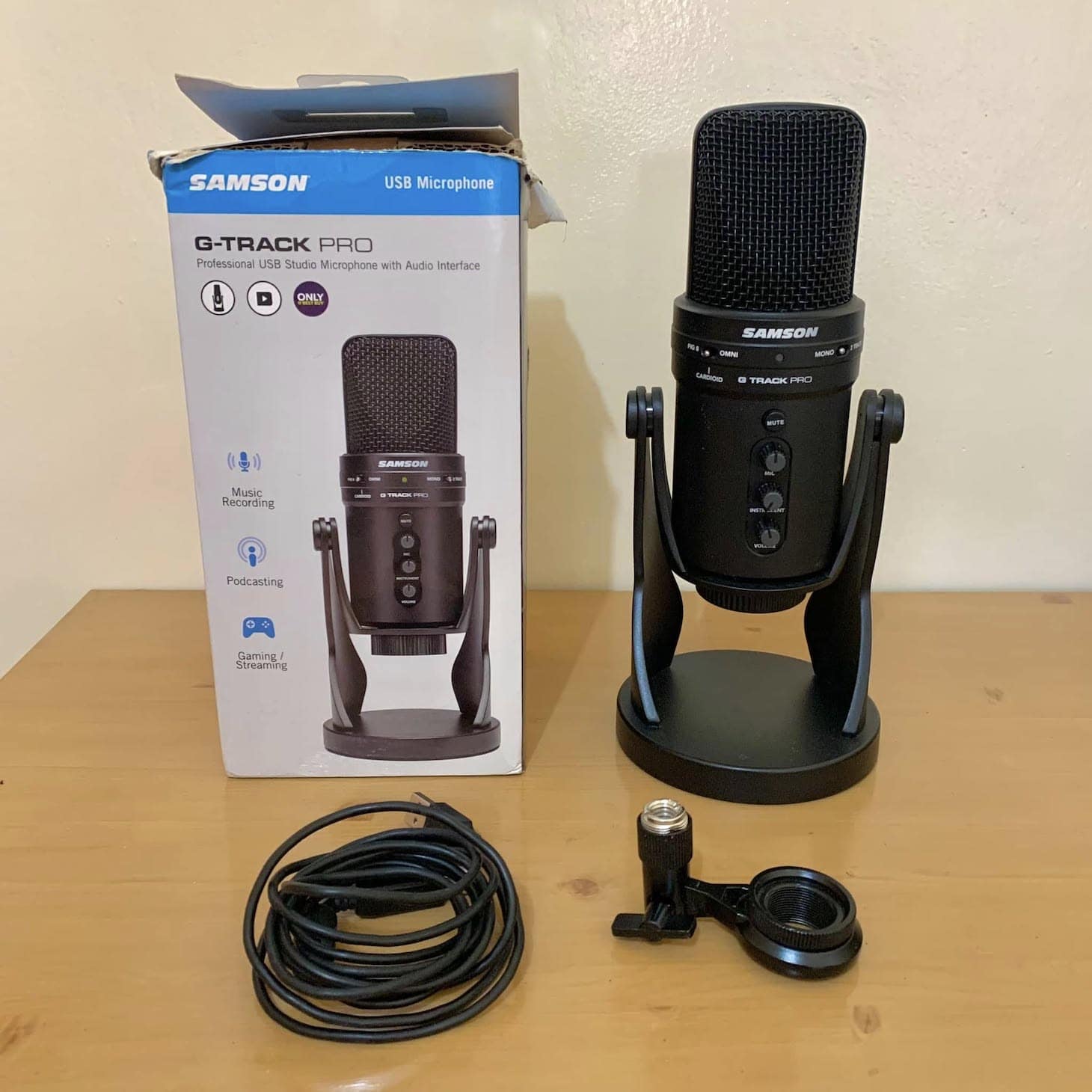
Samson G-Track Pro
Right from the start, the G-Track feels much sturdier than the Yeti. Its solid metal body has a more solid feel to it. The G-Track is noticeably bigger than the Yeti, and heavier to match.
I don’t like the knobs on the G-Track. They are a bit loose and jiggly and the mute button doesn’t offer much tactile feedback.
Like the Yeti, the G-Track also comes with a desk stand. And like the Yeti, I would mount the G-Track on a mic arm instead. Like the Yeti, it picked up the sound of a coffee cup being placed on the desk. Although the desk stand is also bad at being a shockmount, I don’t think it is quite as bad as the Yeti’s.
The G-Track has similar controls with volume, gain, mute, and pattern selector. It has fewer polar patterns than the Yeti, only offering bidirectional, cardioid, and omnidirectional polar patterns.
The G-Track also has a selector for mono and 2-track, and an instrument control. This is because you can also connect an instrument directly to the mic. This makes it easier to sing and play guitar, for example, through one device. I can see this being useful for podcasters who want to host live musical guests, but in most cases I’d recommend a condenser microphone for live acoustic performance.
Sound quality is similar to the Yeti, maybe just a tiny bit crisper and fuller.
What I did find interesting is that there seems to be a slight dip in volume when you switch to the omnidirectional polar pattern. It isn’t a big dip, but it is noticeable and you will probably want to boost the mic a bit.
6. Earthworks QTC40
The Earthworks QTC40 (also available as a matched pair) is all about capturing super-detailed sound in Omni mode. It's designed to have a frequency response that's unlike anything I've heard before in an Omni Mic because it's flat across all frequencies but still interesting, so it captures exactly what you're hearing in the room.
And let me tell you, the specs on this thing are crazy! It has a frequency response of 3 Hz to 40 kHz. Yeah, you heard that right. It's perfect for capturing all the little details in a room, whether you're recording a choir performance, a grand piano, or just hanging out in a cool space and recording a round table conversation for your podcast.
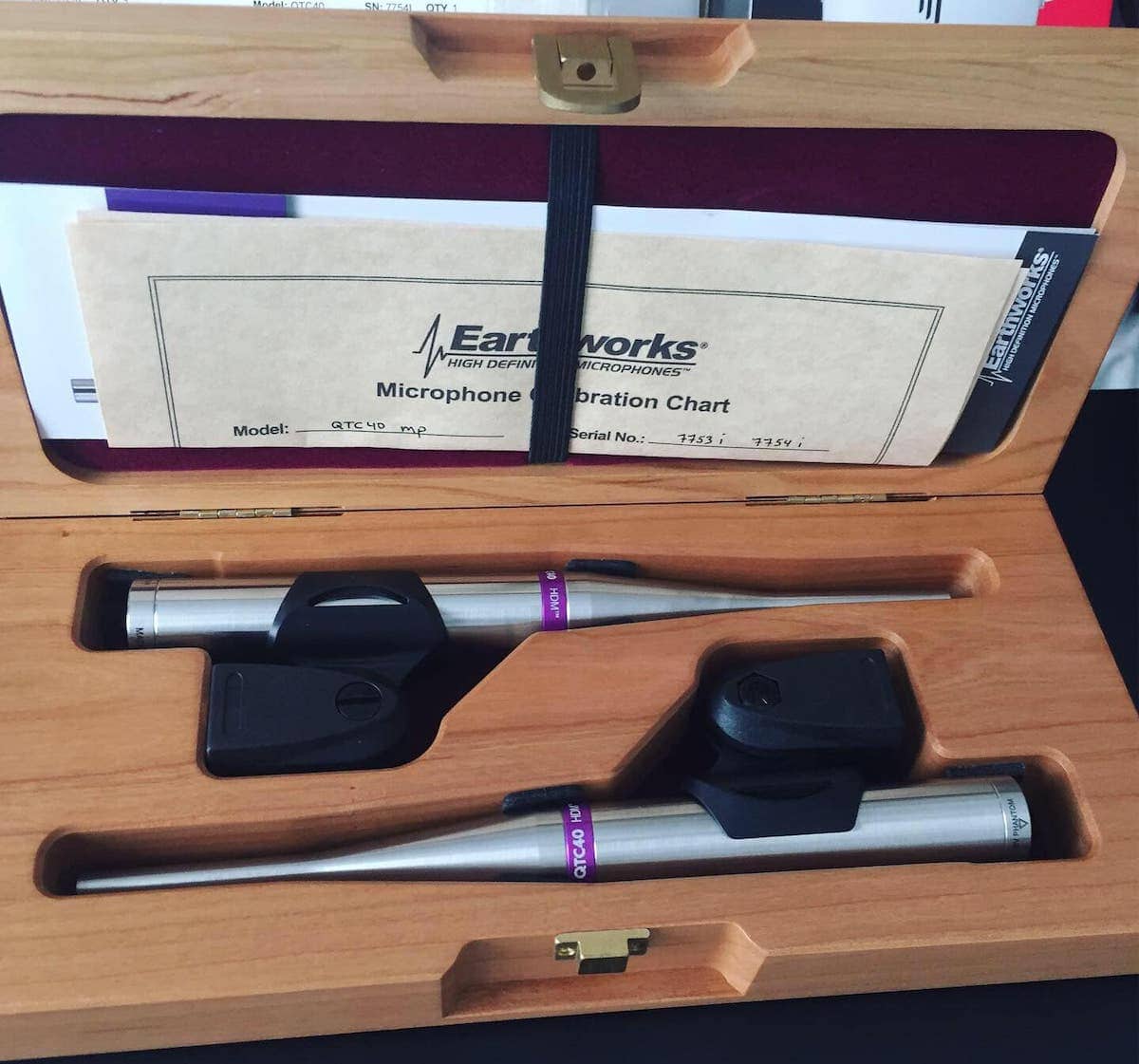
Earthworks QTC40 (matched pair)
In many ways, it sounds like it's been modeled after the human ear. You get this beautiful 360-degree sound that captures everything within the range of the microphone. It's like having a surround sound mic. But here's the cool part - it's actually a mono mic! So if you get a pair of these, you can get a really nice wide sound.
I've used just one pair of these mics to record people talking for documentaries, and let me tell you, the clarity is unbelievable. The "TC" in the name stands for time coherent, which basically means it has the lowest self-noise possible for an Omni Mic. So if you're looking to record something delicate with that choir-like quality, I really don't think you can find a better mic.
And let's not forget about the exceptional phasing. The mic compensates for the distance between the source and the capsule, so when you're setting up a stereo recording, the phasing is spot-on.
Now, the only thing I wish is that they would have made this mic both passive and active. It would have been great for camerawork.
7. Shure VP64A
The Shure VP64A is another reporter-style mic like the Rode Reporter. It was designed to be used out in the field for reporting and conducting interviews. Shure, like Rode, is one of the major names in microphone manufacturing.
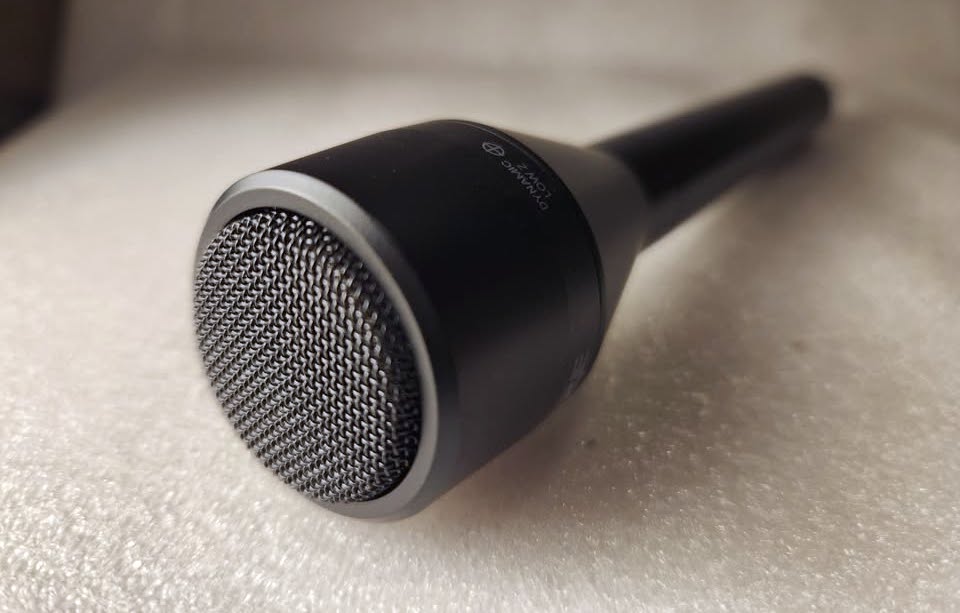
Shure VP64A
The VPP64A looks similar to the Reporter, with its long, thin handle and sturdy metal construction. The Shure feels smaller and lighter than the Rode, so I could see it being more comfortable over long periods of use.
The VP64A offers similar sound quality to the Reporter, albeit with slightly less clarity. As you’d expect for a microphone designed for outdoor use, it reliably rejects background noise.
While the VP64A seems to prioritize the human voice, it does pick up some movement noise here and there, more noticeably in breaks in dialogue. I found it detecting some movement noise when offering the mic to the interview subject. It’s fairly minimal, but worth noting.
If you keep your hand still while holding the mic, the noise isn’t as distracting. But as soon as you start rolling the mic around or move it around constantly, it becomes almost unusable.
I would probably use this as more of a camera mounted mic or have it mounted to a boom arm or stand. This seems to eliminate most of the handling noise while still providing decent sound.
8. Sony ECM-CS3
The Sony ECM-CS3 is a bit different from your typical lavalier mics. It doesn’t look or function the way you expect a lav mic to, and is quite a bit cheaper.
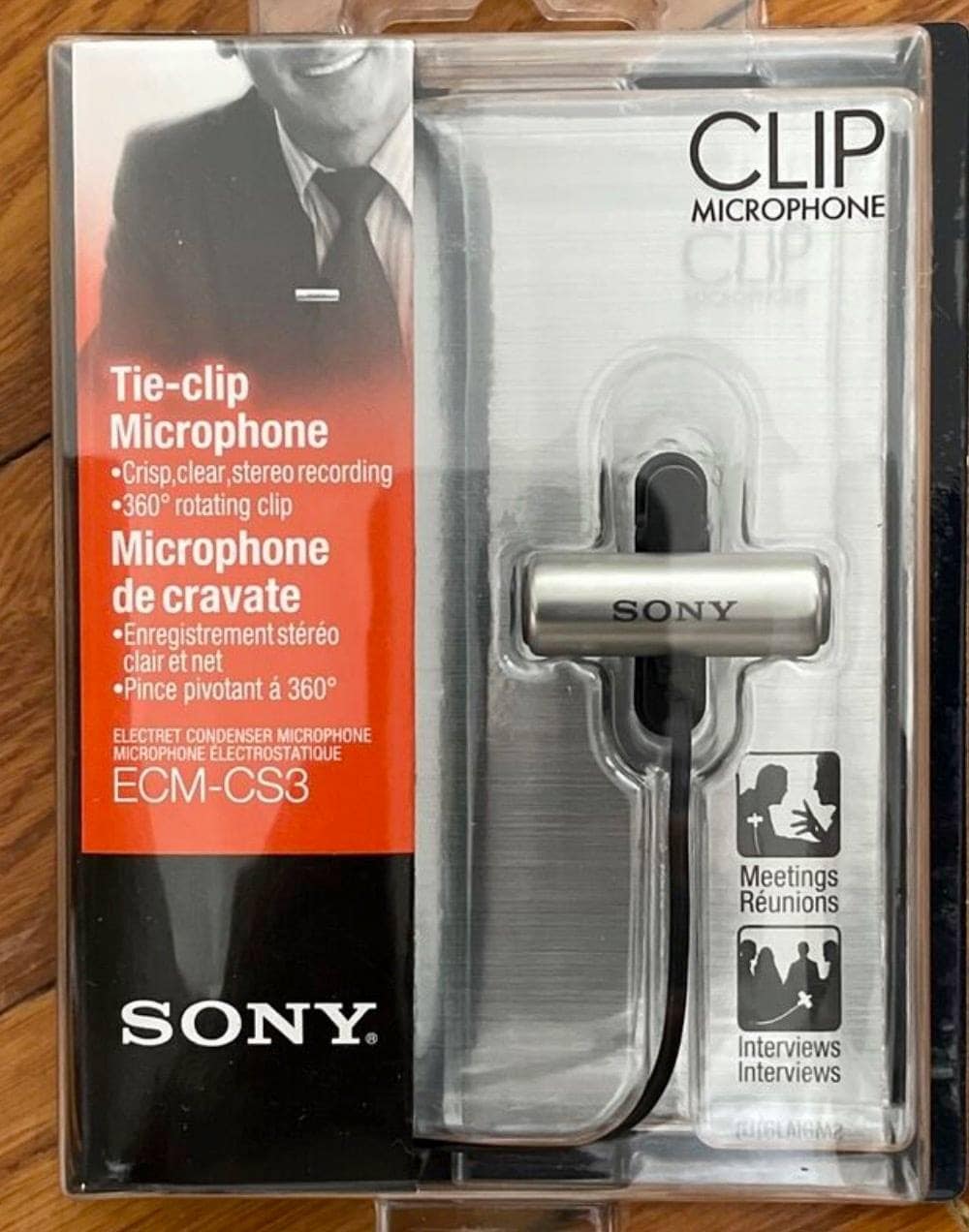
Sony ECM-CS3
I’ve played guitar for most of my life. I’ve learned to believe in the mantra “if it’s cheap, it ain’t good, and if it’s good, it ain’t cheap.”
This Sony microphone’s plastic body and rubber cable are lightweight, almost disconcertingly so. The connection from the cable to the microphone’s body feels fragile.
The ECM-CS3 also uses a fairly standard 3.5-inch TRS connector instead of the mini XLR or standard XLR you usually find on a lav mic. But don’t think that because it uses a 3.5-inch audio jack that you can just plug it into your computer or phone.
Technically, you can just connect it to an audio jack, but it might not provide the mic with the 3.5V of power it needs. You are going to likely need a soundcard like the Sabrent External Soundcard I ended up using.
But once you get the mic working, the actual sound quality isn’t half bad. The mic manages to pick up sound quite well, although it does sound better clipped onto a collar than a lapel. It also picks up sound evenly from all directions, and sound rejection is fairly good.
I feel like wearable microphones need to be sturdy to accommodate for wear and tear. I wouldn’t use this microphone in a professional setting. However, for easy personal use, such as for video meetings, Skype calls, or even while gaming, the ECM-CS3 is decent and easy enough to use. But I would definitely avoid this mic if you want to do any sort of production.
What is Omnidirectional?
Microphones have a few different polar patterns. A polar pattern simply refers to how the mic picks up sound.
Cardioid, for example, only picks up sound directly in front of the diaphragm. Figure 8 picks up sound from the front and back.
Omnidirectional picks up sound coming from any direction. This basically creates a sphere around the microphone, allowing it to capture sound all around it.
Types of Omnidirectional Mics
Just like other mics, omnidirectional mics come in three different types: dynamic, condenser, and ribbon.
Dynamic Mics
Dynamic mics are your standard type. They are very commonly the type used for USB mics.
They are fairly cheap and easy to make, making them ideal for USB mics. Cheaper, entry-level mics are usually also dynamic.
Dynamic mics are also very durable. They aren’t that sensitive to movement, making them ideal for live sound since they tend to be thrown around and generally take a beating. They can also handle higher sound pressure before distorting.
Dynamic mics aren’t very sensitive to sound, however. They don’t have a very wide frequency range and can’t reproduce sound as accurately.
Condenser Mics
Condenser mics are also fairly common, but not as common as dynamic mics.
Condenser mics are much more sensitive than dynamic mics. Both in terms of movement and sound.
Condenser mics are meant to be held securely on a mic stand. They can easily break from being dropped or bumped.
But they are also more sensitive to sound, which means that they can capture sound better.
Their frequency range is much wider than dynamic’s, and they tend to have a more natural sound. This makes condenser mics much better at producing a more accurate sound.
They do require phantom power to work. This is often provided through an audio interface, desk, or dedicated power supply.
Ribbon Mics
Ribbon mics aren’t very common. They are usually only found in professional studios.
They are the most sensitive of the three types. They are designed to produce the most accurate sound possible. Because of their increased sensitivity, Ribbon mics are ideal for capturing very detailed, intimate and “up close” perspectives. I love using Ribbon mics on Pianos and Guitars.
They can also excel on speaking voice if you’re capturing a conversation or maybe actors re-recording their parts for a movie. A technique called ADR (Automated Dialogue Replacement).
Because Ribbon mics are more neutral sounding than condensers, they tend to tame harsh, bright sources very well.
This also makes them very fragile and very expensive. You won’t usually find a ribbon mic affordable for the average person.
Advantages of Omnidirectional Mics
Using an omnidirectional mic or the omnidirectional polar pattern has a few advantages over other polar patterns.
Since they pick up sound equally from all directions, you don’t really have to worry about the placement of the mic. You can just place the mic in front of a sound source and start recording.
This also makes them great for recording multiple sound sources. If you are recording a choir, for example, you can place the mic on a spot and have all the singers stand equal distance from the mic.
All of the singers will then be recorded at an equal volume. This allows you to group different parts of a choir easily as well as cutting down on how many mics you need to use.
Omnidirectional mics are also often used as room mics. A room mic is used to capture the overall sound being played in a room and the reflections of the sound.
This is usually done when recording drums. You will have every part of the drum kit mic’d up, with an omni mic to capture the sound as a whole.
You can then take the individual drum tracks and blend in the room sound. This creates a more natural, live sounding drum track.
Room acoustics often have a significant impact on the sound of a source. Therefore, Omni microphones are essential for capturing the authentic ambience and true sound of non-percussive dynamic instruments such as piano, strings, vocalists, and even choirs.
These microphones are effective in capturing the unique qualities of the room where the instruments or vocals are being performed.
An even more captivating effect can be achieved by using two Omni-directional microphones arranged in a stereo configuration. This arrangement produces a wider surround sound that is particularly valuable for film scores.
Omnidirectional mics also tend to have a more natural sound overall. This is especially evident when using them in a close-miking setting. That is why lavalier mics are usually omnidirectional.
Disadvantages of Omnidirectional Mics
Omnidirectional mics aren’t prefect, however. They do have their own drawbacks.
Because the capture sound from all directions, they aren’t very well suited to very noisy locations. This also makes them susceptible to feedback.
You won’t use an omni mic in a setting where noise isolation is important. This means that you aren’t going to put an omni mic on stage with a band.
You also need to exercise caution when using two Omni mics in a stereo configuration, as they may experience phasing issues if not positioned correctly.
Creative Recording Tips
One way I enjoy using omnidirectional microphones is to re-amp rooms in order to add depth to vocals and instruments. It's similar to creating real-time impulse responses.
To do this, set up a pair of neutral, good quality studio monitors aimed into the room you want to capture. Then, place two omnidirectional microphones in a left-right configuration at the far end of the room, facing the speakers.
When you play back the audio through the speakers, the omnidirectional microphones will capture the delayed reflections of the room.
Route this audio to your DAW while recording, just like you would with a reverb effect on an auxiliary track.
This technique was highly popular in the 60s and 70s, when big studios like Capitol Studios and Abbey Road Studios in London created special echo chambers to achieve unique, natural reverbs.
You can even try this at home if you have a particularly resonant bathroom or a living room with decent acoustics.
In some ways, it can be more natural than using a digital reverb from your DAW.
Final Word
Whether you are starting a podcast, doing interviews out in the street, or want to keep your hands free with a lav mic, having a high-quality omnidirectional mic around is a privilege.
If your environment is going to be noisy, there are certain omni microphones that are much quieter than others. This is especially important if you plan on using them for outdoor recording during filming.
Focus on narrowing down your choices to the ones with the lowest self-noise. As mentioned before, this is one of the biggest disadvantages of these microphones.
From the Blue Yeti, which is a great beginner streamer mic, to the Shure MVL’s incredibly easy to use design, or the incredibly clean and quiet Earthworks QTC40, you won’t go wrong with any of these.



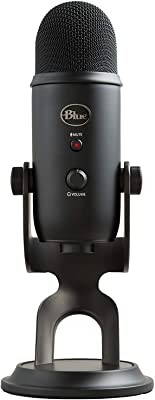
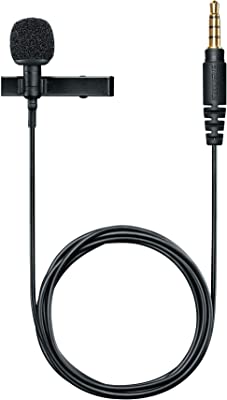



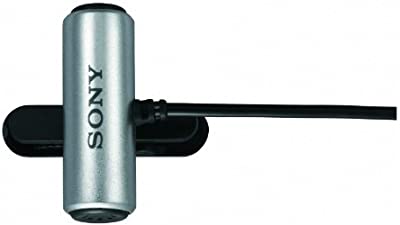
I enjoyed your articles of description of the various mic’s, but still haven’t found what I am looking for. I want a mic that 3 or 4 singers with instruments (guitar, mandolin, banjo, fiddle) can all play and sing around. I would appreciate some help if you can. Thank you for your helpful information, good job